
- Sikkim Tourism
- Places to visit

Gangtok, Sikkim. Photo Credit @chettriraja

Sharing is caring!
- Facebook icon Facebook
- Twitter icon Titter
Gangtok at an elevation of 1,650m (5,410ft) is a city, the capital, and the largest town in the state of Sikkim. Nestled at higher peaks towering by the Himalayan Mountain Ranges, is a heritage for rich culture and traditions with a touch of modernity. It is one of the most famous tourist Hill stations in India.
Gangtok, being blessed with spectacular natural landscapes and a pleasant temperate climate that exists all around the year also serves as a gateway for campers and trekkers to the Himalayan mountain ranges. While giving a picturesque view of Mount Kanchenjunga- the world’s third-highest peak on the west side of the city, Gangtok offers heart-rending opportunities for exploration. Gangtok thus has always been the heart of Sikkim’s tourism industry.
Buddhist monasteries, Stupas, and Pagoda-roofed houses add radiance to the already awe-vista beauty of the place. Expansion of the place in accordance with tourism aspects as such being tagged as the “ Switzerland of the East ” is justified because of its cleanliness and the abounding greenery.
The best time to visit the place is during March to Late May when the wild Rhododendrons blossoms give out vibrant touch to its surroundings and October to Mid-December.
One can never get enough of the beauty and culture it has to offer coupled with the hospitability of the people where every tourist is being treated as one of their own.
Culture and Traditions
Major native tribes dwelling in harmony are the Lepchas, Bhutias, and Tibetans. Besides the nationwide celebration of various festivals, some unique festivals like Buddha Jayanti, the Birthday of Dalai Lama, Saga Dawa, Lhabab Dhuechein, etc. are regarded with great esteem. Folk dances and folk songs of the Sikkimese go hand-in-hand with the rich culture the state is known for. Famous folk dances include Lu Khangthamo, Gha To Kito, Chi Rimu, Gnungmala Gnunghey, etc including mask dances such as Enchey Chaam, Kagyed Dance, Rumteck Chaam and Gouthor usually performed on ceremonial and festive occasions.
Though known throughout the country, nothing beats the popular and traditional touch in every veg and non-veg momo (vegetables and meat wrapped in thin flour wrapper) the Sikkimese are known for. Famous noodles-based dishes include Wai-Wai, Thukpa, Gyathuk, and Wonton, while other cuisines famous cuisines include Shah-Phaley (Sikkimese patties), and Gack-Ko soup. Churpee (hardened cheese of cow’s or yak’s milk) and Chhang ((local frothy millet beer) are also well known among locals and an attraction to tourists.
The abundance of culture and local food varieties in addition to nature’s beauty it has to offer have always played a major role in the Gangtok Tourism industry.
Football and cricket are the most popular sports in Gangtok while archery is a traditional sport.
The best places to visit in Gangtok
The natural beauty and the soothing ambiance of rich culture together turn the hill city of Gangtok into heaven. The picturesque beauty of the Kanchenjunga and the Teesta River flowing on the rocks are the added-on gifts to mountain lovers. Gangtok Tourism offers a bunch of attractions for visitors.
Tsongmo Lake
Tsongmo Lake, also known as Changu Lake, always remains at the top of the bucket list of tourists. It is a glacial lake, 40 kilometers (25 miles) away from Gangtok city. It is situated at an elevation of 12,313 ft from the sea level. If you visit there in winter you can find the oval-shaped lake to be fully frozen. At seven seasons of the year, the surface of the lake reflects seven different shades of colors.
A small temple of Lord Shiva, situated on the bank of the lake is quite popular among the visitors. During Guru Purnima, people gather at the lake with the faith that the lake water possesses a healing quality. If you are a nature lover then the middle of May will be the perfect time for you, when the flowers of rhododendron, primroses, blue and yellow poppies blossom. Gangtok Tourism offers some joy rides also there during summer.
As this region is a restricted area, the Indian nationals require an Inner Line Permit and the foreign nationals require a special permit to reach there.
Rumtek Monastery
Rumtek Monastery, also known as the Dharmachakra Centre, is considered one of the most important sacred places among the Buddhist people around the world as the most significant hub for Kagyu teachings. Although originally, it was built in the mid-18th century by the 9th Karmapa Lama Wangchuk Dorje, the attractive Gompa architecture that we can see there now, was built by the 16th Karmapa Lama Rangjung Rigpe Dorje.
It was initially restricted to Buddhist monks only. In the year 1966, it was opened to all. It is situated on a hill 23 kilometers away from Gangtok city. From the top of the monastery, the view of the whole of Gangtok city injects an aesthetic feeling into the visitors. The Gompa architecture, the golden stupa, murals, and sculptures make this place a point of artistic interest also.
The scheduled visiting hour of the sacred place is 6:00 AM – 6:00 PM and the required entry fee is 10 INR per person.
Nathu La Pass
A trip to Gangtok always remains incomplete without a visit to Nathu La pass. It is the mountain pass that connects Sikkim to the Autonomous region of Tibet. Nathu La, situated at an altitude of 14,140 ft from the sea level, is 54 kilometers (34 miles) long on the Indian side. As a consequence of the Sino-Indian war in 1962, the pass remained sealed for a long period. In 2006, following several Sino-Indian trade agreements, the pass has been reopened. If you add this pass to your bucket list, then you have to visit it in summer as it remains closed during winter due to heavy snowfall.
Gangtok allows Indian citizens only to visit the pass with an Inner Line Permit.
Tashi Viewpoint
Tashi viewpoint, located 8 kilometers away from Gangtok city, is the most popular viewpoint of the Kanchenjunga and Siniolchu. If the sky is clear then the picturesque view of the snow peaks of the mountain will mesmerize you. This viewpoint is quite popular among tourists for the aesthetic view of the sunrise from here. Phodong and Labrang monasteries, situated in the lap of the opposite hills will give you a photographic view under the soothing sunlight. It was named after Tashi Namgyal, the former king of Sikkim founded this viewpoint.
The viewpoint remains open from 5:00 AM to 6:00 PM. No entry fee is required there. But if you want you may get binoculars on rent, for only 10 INR. Several cafeterias and food joints are present there at the surroundings for refreshment.
Seven Sister Waterfall
Seven Sister Waterfall is a must-visit spot in Gangtok. It is the most beautiful waterfall in Sikkim. At a distance of around 32 kilometers from Gangtok city, the beautiful waterfall is located on the Gangtok-Lachung highway. The seven falls residing together side by side make the nomenclature justified. Also, the waterfalls are in seven stages, although only four are visible among them. During the rainy season, the waterfall comes to life and water makes a terrific roaring sound while falling on the limestone. A waiting spot and viewpoint have been made by the Department of Tourism and Civil Aviation. Gangtok has made a small footbridge also over the stream so that the tourists can get a close view of the mesmerizing beauty.
Phodong Monastery
Located at a distance of 38 kilometers from Gangtok City, Phodong Monastery is one of the six important Monasteries in Sikkim. It is situated at an elevation of 4500 ft from the sea level. It was founded in the first half of the eighteenth century by Chogyal Gyurmed Namgyal. It is also considered one of the three significant monasteries of the Kagyu sect. It is murals and sculptures attract art enthusiasts from all over the world. Each year, according to the Tibetan calendar, on the 28th and 29th days of the 10th month, the Phodong festival takes place there, where the monks together perform the Chaam Dance.
Do Drul Chorten Stupa
Do Drul Chorten Stupa is a significant point of spiritual interest among the visitors. It was built in 1946 by Trulshik Rinpoche, an important person of the Nyingma order of Buddhism. The myth behind the stupa says that the place became haunted by evil spirits. To drive away from the spirit the renowned hermit established the stupa. Holy religious antiques including a set of Dorjee Phurba and Kangyur are preserved there. 108 Mani Lhakors are present around the stupa. Murals of Padmasambhava and Guru Snang will never fail to grab the attention of art lovers.
Namgyal Institute of Tibetology
Namgyal Institute of Tibetology is an institute for studies and research on Tibetan Buddhism. It was established in 1958 to promote research on Tibetan culture, history, religion, art, language, and philosophy. For tourists who want to explore Sikkim as the only hub of Tibetan culture in India, this is a place that must not be missed. There is a museum of Tibetan iconography and artworks which is considered the largest collection of Tibetan documents outside Tibet.
Visitors can visit there every day of the week except Sundays, and the second Saturday of each month, along with the holidays declared by the Government. The scheduled visiting hour is 10:00 AM – 4:00 PM. An entry fee of 10 INR is required to enter there.
Ganesh Tok is a place where Hindu culture is made fusion with Tibetan culture. It is a small temple, decorated in Tibetan style, with colorful flags. The temple dedicated to Lord Ganesha is situated 11 kilometers away from Gangtok city, at an elevation of 7200 ft. Although it is too small to accommodate two people inside at a time, it is quite popular among tourists as a viewpoint. This place, surrounded by nature, always gifts a piece of tranquility to the visitors.
No entry fee is required there. The temple remains open from 6:00 AM to 7:00 PM.
Baba Harbhajan Singh Memorial Temple
Baba Harbhajan Singh Memorial Temple is not any temple dedicated to any mythological deity. It was established to express reverence towards an Indian Army personnel named Baba Harbhajan Singh who was drowned in a glacier. Several folklores about his moving spirit are quite popular among the local people. The temple is situated at a distance of 50 kilometers from Gangtok city towards the Nathula border. Each year, during summer, Gangtok tourism permits tourists to visit there issuing an inner line permit.
Ban Jhakri Falls
Located 10-12 kilometers away from Gangtok city, Ban Jhakri Falls has become a new attraction of Gangtok. A beautiful waterfall along with an Energy park and statues of Lyam Lymay, Mangpas, Lepcha, and Ban Jhakri ancestors, is considered one of the most favored picnic spots. It includes several food joints and a swimming pool also.
An entry fee of 50 INR is required there. From 8:00 AM to 6:00 PM it remains open.
A trip remains incomplete without shopping and M G Marg is the shopping hub of Gangtok. This place is considered as the heart of the city. As this area is made for pedestrians, vehicles should be parked outside the marketplace. The buildings on both sides are painted in green as per the Government’s instruction to convey the ‘Green City’ message. Gangtok tourism offers a smoke-free, litter-free shopping experience to visitors. The marketplace remains closed on Tuesdays.
Himalayan Zoological Park
If you want to explore the wildlife living in the climate of Sikkim, Himalayan Zoological Park is there for you. At an elevation of 1780 meters, the zoological park has been made in a place named Bulbuley, at a distance of 3 kilometers from the heart of the city. It was established in 1991, in such a way that all the creatures can live there safely in their natural habitat. You can meet snow leopard cats, Himalayan red pandas, Himalayan monal pheasant, crimson horned pheasants, and Himalayan palm civets with an amazing view of Kanchenjunga.
You can explore on foot as well as by car. But since it will take a long time to reach one habitat to another by walking, most of the visitors decide to hire a car available there for half a day. For refreshments, café, food corners, and a watchtower are present there.
The zoological park opens at 9:00 AM and closes at 4:00 PM every day of the week except Thursday. For adults, the entry fee is 25 INR while for kids it is 10 INR and for foreigners, it will cost 50 INR. Additionally, for the small vehicle, you have to pay 40 INR and for the big vehicle, you have to pay 100 INR there.
Fambong La Wildlife Sanctuary
Gangtok tourism offers another spectacular habitat of Himalayan flora and fauna, 20 kilometers away from the Gangtok SNT bus stand. The sanctuary, situated at an altitude of 1524 – 2749 meters, is an extension of the Kanchenjunga National Park. Various types of rhododendrons, ferns, bamboo, and oak can be seen here. For bird lovers, this place is heaven. Black eagle, maroon oriole, yellow-billed blue magpie, Nepal tree creeper and so many other species of birds are found there. Among animals, Himalayan brown bears, red pandas, and barking deer are very popular among visitors.
Visitors are allowed to go there between 8 AM to 3 PM. An entry fee of 5 INR is charged by the forest department.
Sa-Ngor-Chotshong Centre
Sa-Ngor-Chotshong Centre, also known as the Crown of Sikkim, is one of the most important monastic institutes for Tibetan studies. It has become an important destination for Gangtok tourism due to its architecture and artworks. This monastery of the Ngorpa sect was established in 1961. This is the only monastery in India where the Sakya order of Buddhism is followed. The murals and thangkas cover the walls of the monastery. This place is located around 5 kilometers away from the city. As from March to June the climate remains tourist-friendly, it will be the best time to visit. Also, if you want to see this beautiful monastery covered in snow, you have to visit it in winter.
So, if you visit Gangtok, do not forget to leave your footprints in the above-mentioned tourist places.
Best time to visit Gangtok
Tourists, trekkers, and honeymoon couples rush to Gangtok during the peak season ranging from September to June. Autumn is the best time to enjoy the breathtaking scenic views of the enchanting peaks and lakes. The months from October to mid-December and from March to June are the ideal time to visit Gangtok.
The months of July-August are not preferable due to the incessant rains, devastating landslides, and roadblocks. Dense fog covers the atmosphere, and it becomes difficult to drive through it. The temperature is quite pleasant during the monsoon months ranging from 17-22 degrees.
The temperature from October to February is usually when the climate is mystic and pleasing. It ranges between 4-7°C and is the best time for trekking, river-rafting, paragliding, mountain biking, and other adventurous activities. The cold, dry, and bright weather draws the maximum tourist during these months.
The spring months are also the best time for sightseeing as the roads are blooming with flowers. The bright, sunny weather accompanied by vibrant flowers provides a visual treat to your eyes. Most travelers find the months of October-February the best time to visit Gangtok.
How to reach Gangtok
One of the many reasons behind the popularity of Gangtok is its easy accessibility and scenic beauty. You can reach Gangtok by road, railway, and airway from any part of India.
Railway The closest railway station to Gangtok is New Jalpaiguri which is 117km away from the hill station. The railway station is connected to all parts of the country, including minor parts. You can easily avail of railway transportation from major cities like Mumbai, Bangalore, New Delhi, and Kolkata to reach Gangtok. Most tourists prefer to avail of railway transportation to reach Gangtok.
You can hire a taxi or private jeep from New Jalpaiguri to Gangtok. Alternatively, you can take a state-run bus from Siliguri bus terminus to Gangtok. It will take you around 4-5 hours to reach the majestic hill station.
Airway The nearest airport to Gangtok is Bagdogra Airport in West Bengal. It is located at a distance of 125km away from Gangtok. Many popular carriers like Air India, IndiGo, SpiceJet, and others run regular flights to Gangtok. All the major cities in the country are linked to this airport. From Bagdogra Airport, you can catch a shared cab or private car that will take you to Gangtok within two hours. The scenic beauty of the majestic mountains and shimmering river makes the car ride enchanting.
You can also avail of TSA helicopter services from Bagdogra to Gangtok. It operates daily and takes around 20 minutes to arrive at Gangtok. However, they often get canceled owing to adverse weather conditions.
Road Gangtok is well connected to the nearby tourist destinations by roadways. You can reach Gangtok from Darjeeling , Sikkim, Siliguri, and Kalimpong via the National Highway 31A. You can find an innumerable number of state-run buses between Siliguri and Gangtok. You can also opt for private buses, taxis, shared cabs and taxis from Bagdogra, New Jalpaiguri, and Siliguri.
Stay Updated!
Be the first one to read the latest post. Don't miss out the best Travel guides and tips every month.

GANGTOK TRAVEL GUIDE
Sikkim is the smallest Northeastern state of India, flanked by Bhutan, Nepal, Tibet and West Bengal on its four sides. Home to the Himalayan mountain range, Mt Kangchenjunga, the highest mountain peak of India, is located in Sikkim. Gangtok is the capital city of Sikkim.
Sikkim became a part of India as late as 1975. An independent monarchy before, little is known about its history, apart from it being a base for Tibetans, and the British building the hamlet of Gangtok as their military base when forging into Tibet during the 19th century.
The impact of this is still vibrant today in the culture, look and feel of the city. It is dotted with Tibetan monasteries and Tibetan culture. Resembling the Bhutanese capital, Thimpu, in its structure, it is a small hill city, a perfect place to unwind and connect with nature. A popular base for treks, Gangtok attracts trekkers from all over India and abroad. Unlike big cities, Gangtok has none of the noise, pollution and bustle, nor a skyline of tall buildings, but is equipped with plentiful amenities to give its visitors are wholesome experience of life in the mountains.

Sikkim is one of the few states that has preserved its natural milieu. Plastics are banned in Sikkim, as is tobacco. For the last fifteen years, Sikkim has been the only state in India which supports organic farming and has banned the import of non-organic food items from other parts of the country.
Nepali is the local language, and spoken popularly. Due to its similarity to Hindi, most people understand Hindi as well. English is the state language. The city is a very tourist friendly locale from the standpoint of communication. Tibetan, Bhutia, Sikkimese are some of the other local languages.
CLIMATE AND BEST TIME TO VISIT
Gangtok enjoys a subtropical, highland climate, which is moderate all the year round. Winter temperatures from 4-7deg C, without snowfall. Spring and summer are the best time to visit (March-June), as you get clear views of the mountain ranges. Rain showers are common in the summer season, and nights can get chilly. Autumn is also pleasant, though a little colder.
The climate of Gangtok is perfect for outdoor activities and hiking. Moving around on foot is also common. The city is well suited for exploration and making day trips to other sights in Sikkim. Gangtok serves as a great base for touring around Sikkim.
GETTING THERE
Gangtok is connected to the rest of India by air, train and road. There is no airport in Sikkim, but its proximity to the closest airport makes the commute possible.
SIKKIM BY AIR
Sikkim is set to get its own airport – the Pakyong Airport, 30 km from Gangtok – in June, 2018, as announced by the Civil Aviation Minister Suresh Prabhu. This will improve the connectivity of Sikkim to the rest of India, giving a big boost to tourism in the state. Sikkim is the only state in India that does not yet have its own airport. The inauguration of the Pakyong Airport will be a big step forward to connect Sikkim with the rest of India.
Currently, Bagdogra Airport (IXB) is the closest airport to Gangtok, and connects Sikkim by air. Located approximately 123 km from Gangtok, taxies ply from the Bagdogra airport to Gangtok. Bagdogra airport is connected to all the major cities of India like Guwahati, Delhi, Mumbai, Kolkata, Chennai. It is also connected to international cities like Thimpu, and Bangkok via Dhruk Air and Paro international carriers respectively.
Other international cities are connected to Bagdogra via the metropolitan cities. Helicopters also fly from the airport to Gangtok, but are subject to baggage limitations of 10kg per carrier.
SIKKIM BY TRAIN
The nearest train station is New Jalpaiguri, in Siliguri. It connects with Guwahati and the rest of the major cities like New Delhi, Kolkata, Mumbai, Bengaluru, Trivandrum, Ahmedabad, Jammu, Secunderabad, Ranchi, Kanyakumari, Jodhpur, Jodhpur, Puri, Bhubaneswar,Amritsar, Chandigarh, Pune and many more.
Taxis ply from New Jalpaiguri station to Gangtok.
SIKKIM BY ROAD
Gangtok is connected by road to Siliguri, Darjeeling and Kalimpong. State and private bus services connect the cities. To reach Gangtok by bus, travellers can board a bus from one of these cities. Taxies are an alternative to buses, the cost for which varies based on the vehicle type.
GETTING AROUND
Shared taxis can be hired from designated stands every 1km. Taxis run on most popular routes. Private taxis can also be hired on a fixed price basis. The central taxi stand is in Lal Bazaar.
The Ropeway is an intriguing feature of Gangtok, which not only makes way for easy commute in a mountainous landscape, but also gives splendid views of the terrain. It links Deorali Bazar with Namnang.
SIGHTSEEING & ACTIVITIES
Gangtok has a little of everything – culture, nature, entertainment and food. Explore Tibetan monasteries to delve into the rich Tibetan culture which permeates festivals, music, food, architecture and the lives of the local people. A walk around the monasteries gives a peep into a different lifestyle. Young monks clad in red robes, learning subjects of the mind and soul, learning arts and sciences along with meditation, are a reminder of a way of a life lives without hassle. On the other hand, beats of Nepali, Hindi and English rock in the alleys and eateries bear testimony to the North east as the cradle for the country’s rock music culture. For those who love Tibetan food, Gangtok is a delight. Momos, Noodles, Thukpa and other local dishes are readily available all over the city and will leave little room for complaint. Nepalis by nature are food lovers, and they ensure that the travellers receive a grand gastronomical experience.
Apart from sightseeing in Gangtok, travellers also take day trips around Gangtok or travel to other parts of Sikkim.
For sightseeing in Gangtok, the following sights are popular:
NAMGYAL INSTITUTE OF TIBETOLOGY
It is a research institute and museum dedicated to the study and exploration of the Tibetan arts and culture. The museum displays Tibetan artifacts like scrolls of manuscripts, cloth paintings, other objects for rituals etc. This is a must visit for a history and culture junkie.
DO-DRUL CHORTEN
This is a Buddhist stupa, which are traditionally places of worship of sacred objects, and symbolize peace. Giant Buddhist prayer wheels circle the stupa. The prayer wheels are inscribed with mantras, and spinning the wheels is believed to spread the peaceful vibrations of the mantra in the surroundings. Young monks can be seen to pursue their studies in and around the stupa.
RUMTEK MONASTERY
The Rumtek Monastery is the abode of the third highest Buddhist Monk in the Tibetan Buddhist sect, Karmapa Lama. The design of the monastery and stupa complex is based on the design of Kagyu headquarters in Tibet. Located away from the city, it is perfect for some quiet reflection and meditation. The natural ambiance makes the complex scenic, and soothing on the eyes.
ENCHEY MONASTERY
This is a small monastery tucked away from the main city, at a distance of 3km from Gangtok. Legend has it that it was built in honor of Druptob Karpo who had the ability to fly and flew to the location from the Maenam Hill. The pagoda structure of the monastery was built in line with the Chinese architectural style in the 19th century. The monastery is known for its wall paintings, apart from being a calm site in the midst of tall pine trees. The deities worshiped in the monastery are Lord Buddha, Lord Padmasambhava, & Loki Sharia.
HANUMAN TOK
Just outside of Gangtok, Hanuman Tok is at the top of a hill, giving splendid views of the Kangchenjunga. Reachable via a stairway, the hilltop has a temple dedicated to Lord Hanuman. As per the legend, Lord Hanuman halted at this peak when he was carrying the Sanjeevani booti to Lanka.
LAKE TSOMGO
At an altitude of 3779m, Lake Tsomgo is a lake surrounded by mountain ranges. The crisp air, brilliant blue water and tranquillity of the place make for a deeply rejuvenating experience. Spring sees the lake blooming with flowers whereas the lake remains frozen in the winter.
NATHU LA PASS
This is a pass located at an altitude of 4309m. From here you can see the fenced Indo-China border. Soldiers on both sides of the international border guard the area, patrolling in all kinds of weather. The viewpoint is reached through a staircase after the taxis drop you off. Grand views of the Himalayan mountain range offer photography enthusiasts and trekkers alike, a refreshing break.
BANJHAKARI FALLS AND PARK
This is a park built around a waterfall, with ridges and bridges all around the main waterfall which plunges from a height of 40ft. Nice for a quick stop or a refreshing shower in the waterfall, this is a popular spot for children.
Many more sights in and around Gangtok make for a travel venture of for every kind of traveller.
TASHI VIEW POINT
The perfect spot to savour a beautiful sunrise and feast your eyes on the Kangchenjunga mountain. Offering breathtaking views of the mountain range, the color of the sky and the mountains as the sun rises in the sky. Binoculars are recommended. To get a full view of the rising sun, it is best to reach a little before dawn, generally around 5am, but varying as per the season.
Gangtok provides an enriching experience to every kind of traveller, with its multitude of options for sightseeing and activities in and around. It is the ideal destination to beat the heat of the summer or escape from the din of the bustling city life.
Get Instant Call Back
Our experts will get in touch with you shortly.
View Sikkim Packages
Why Choose us ?
What makes us diffrent from other tour package companies

Best Travel Experts
Our travel experts have core and intense knowledge about Sikkim sector with over 10 years of experience that will help you choose the best possible itinerary as per your requirements.

24 X 7 On-Trip Assistance
Our travel experts are just one call away during your tour to help you with any kind of immediate assistance so that your tour is a more enjoyable and hassle-free tour.

Best Rate Guarantee
eSikkim Tourism ensures best rates to all our esteemed guests since we have our own hotels and fleet of vehicles and drivers and there is no third-party involvement. This ensures personalized service and best rates.
Popular Places To Visit in Sikkim View All
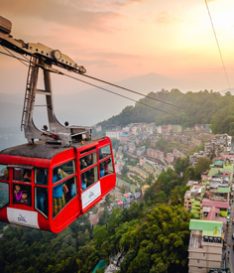
Yumthang Valley Of Flowers
Popular attractions to visit in sikkim view all.
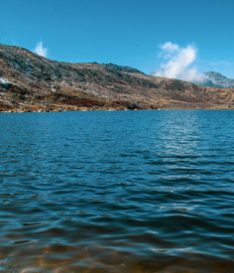
TSOMGO LAKE
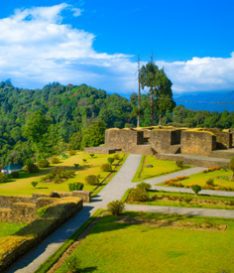
- RABDENTSE RUINS
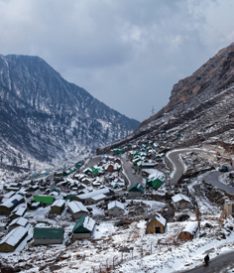
- Nathu La Pass
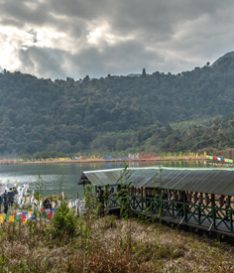
- Khecheopalri Lake
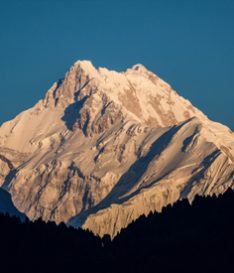
- Khangchendzonga National Park
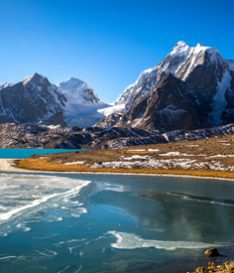
- GURUDONGMAR LAKE
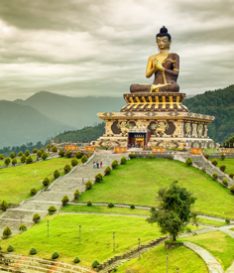
- BUDDHA PARK RAVANGLA
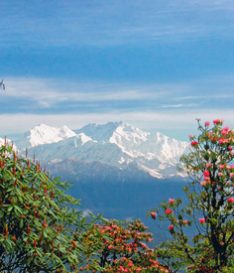
- BARSEY RHODODENDRON SANCTUARY
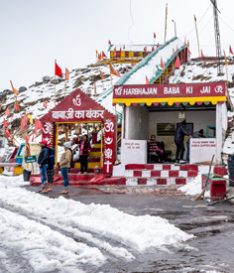
- Baba Harbhajan Singh Temple
Sikkim Best Sellers View All Packages
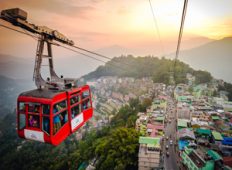
03 Nights / 04Days
Gangtok tour, rs. 6200 rs. 7500.
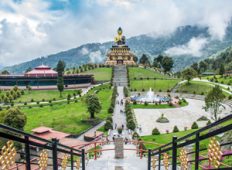
07 Nights / 08Days
Gangtok pelling darjeeling tour, rs. 14500 rs. 17500.
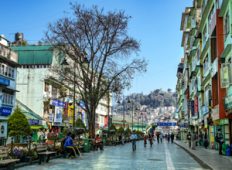
04 Nights / 05Days
Gangtok darjeeling tour package, rs. 9200 rs. 11000.
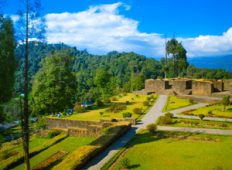
Gangtok Lachung Pelling Tour
Rs. 15000 rs. 18000.
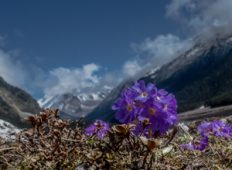
Gangtok Lachung Tour
Rs. 8800 rs. 10500.
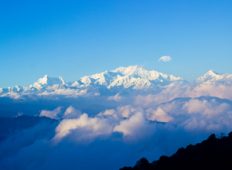
08 Nights / 09Days
Gangtok lachung pelling darjeeling tour, rs. 17000 rs. 20500.
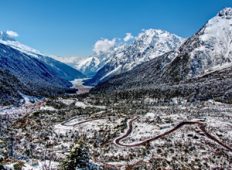
05 Nights / 06Days
Delightful gangtok and darjeeling, rs. 10500 rs. 12500.
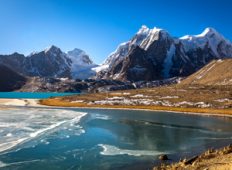
The Sparkling Gems of Sikkim
Rs. 11400 rs. 13500.
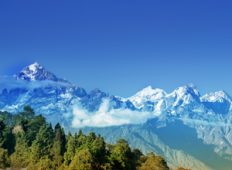
Gangtok Pelling Tour
Rs. 10300 rs. 12500.
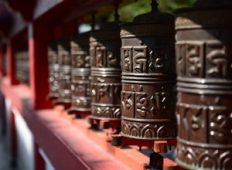
Gangtok Lachen Lachung Tour
Rs. 12000 rs. 14500.
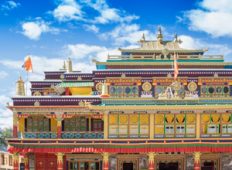
Gangtok Kalimpong Darjeeling Tour
Rs. 10800 rs. 12900.
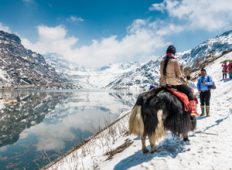
06 Nights / 07Days
Extended gangtok pelling darjeeling tour, rs. 13000 rs. 15500.
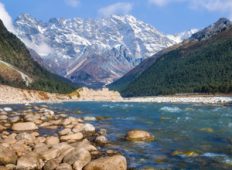
Blissfull Sikkim Darjeeling Pelling Tour
Rs. 11700 rs. 14000.
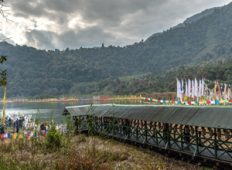
Gangtok Lachen Lachung Pelling Tour
Rs. 15900 rs. 19000.
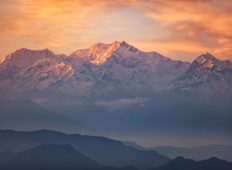
Gangtok North Sikkim Tour
Rs. 13700 rs. 16500, travel guides -->.
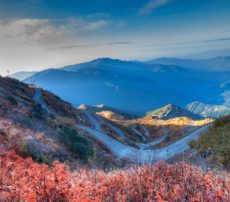
- East Sikkim
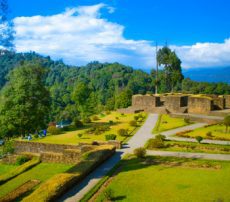
- West Sikkim
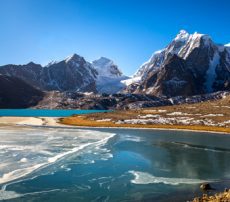
- North Sikkim
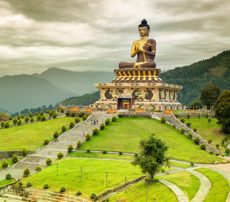
- South Sikkim
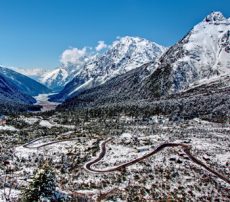
How To Reach
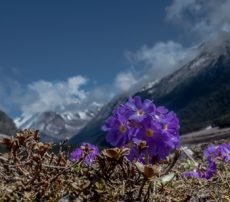
Best time To Visit Sikkim
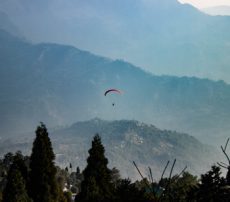
Top Things To Do
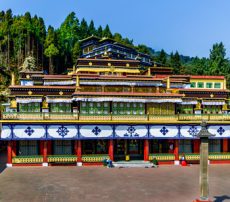
About Sikkim
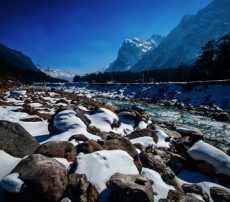
Sikkim In Winter
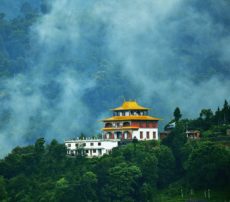
Sikkim In Monsoon
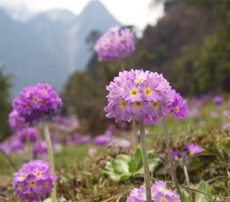
Sikkim In Summer
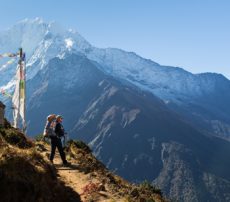
Entry Formalities
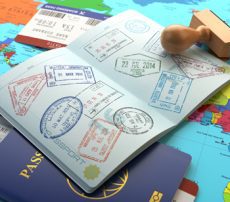
- Restricted Area Permit
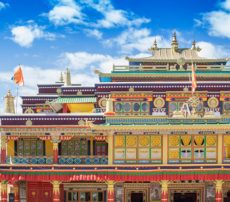
Do’s and Dont’s
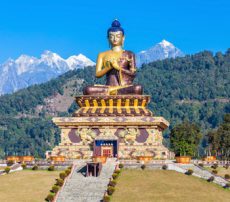
Best Places To Visit In Sikkim
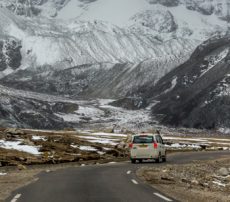
Sikkim By Road
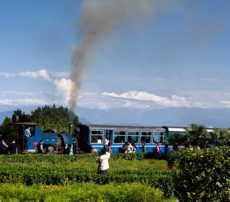
Sikkim By Train
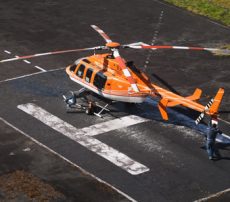
Sikkim By Air
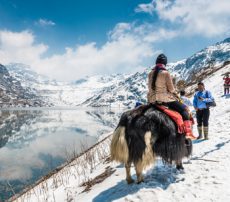
Sikkim Gangtok Tour Packages
Esikkim tourism famous blogs.
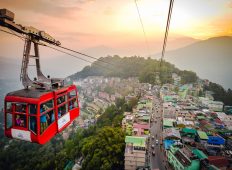
Places To Visit In Sikkim
Published on May 28,2019
Admin, May 28,2019
- --> --> --> --> -->